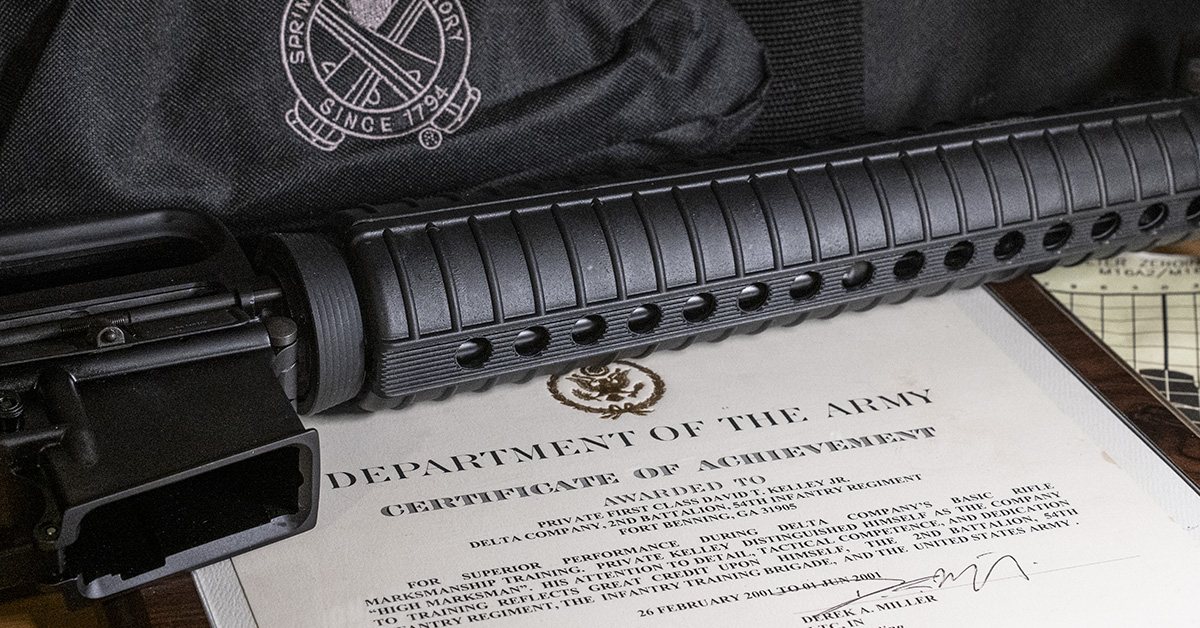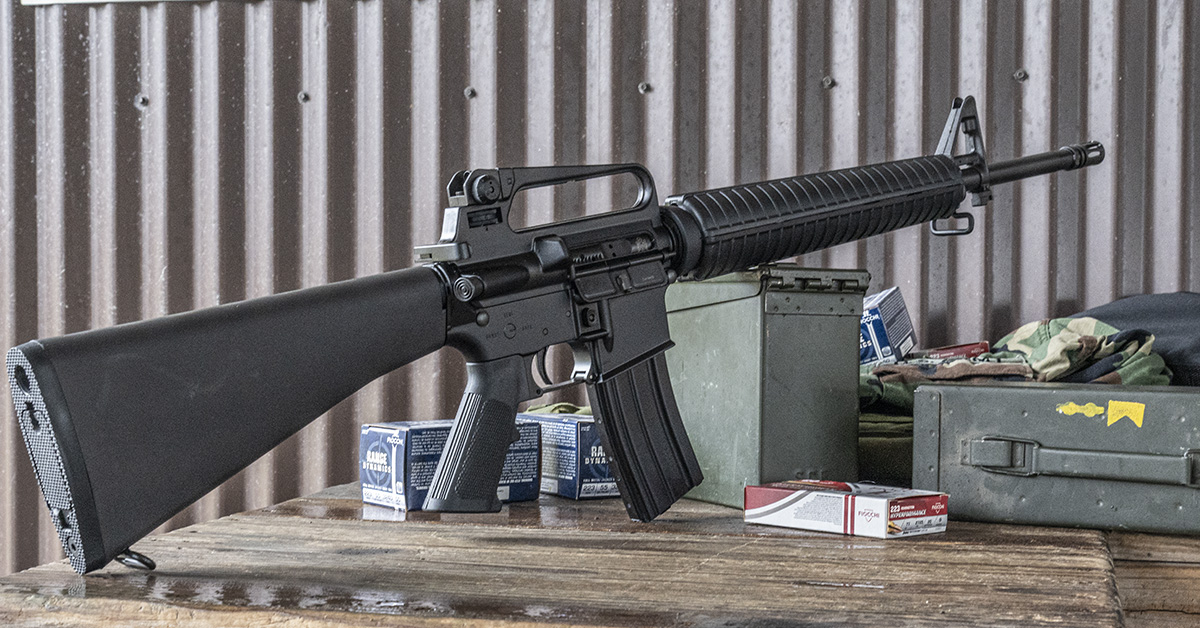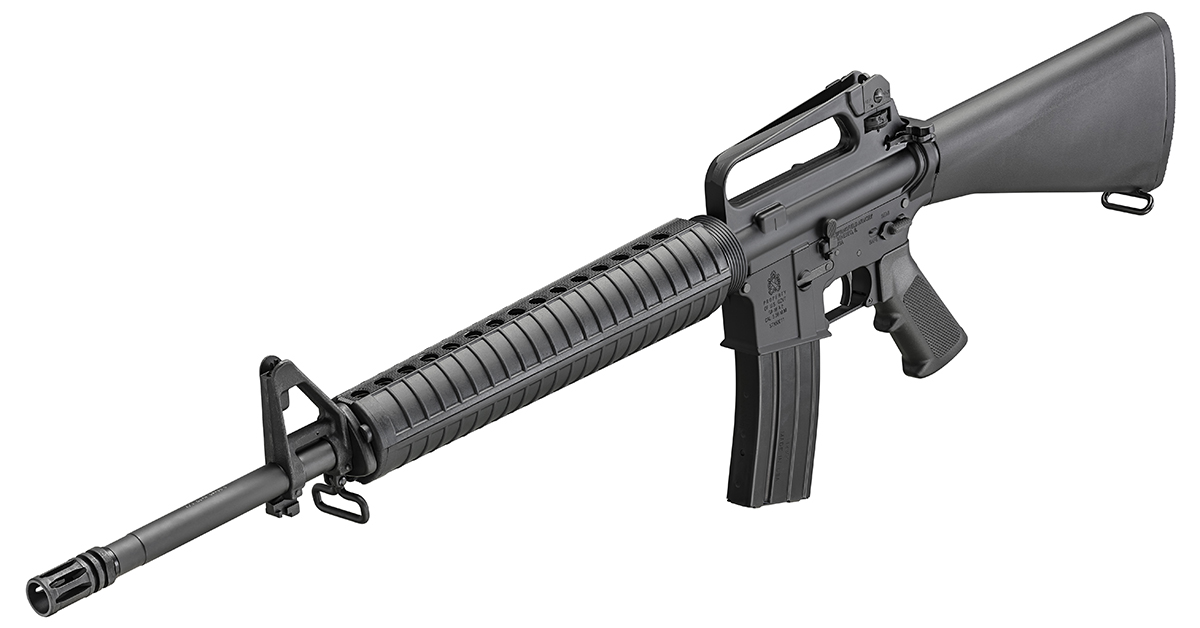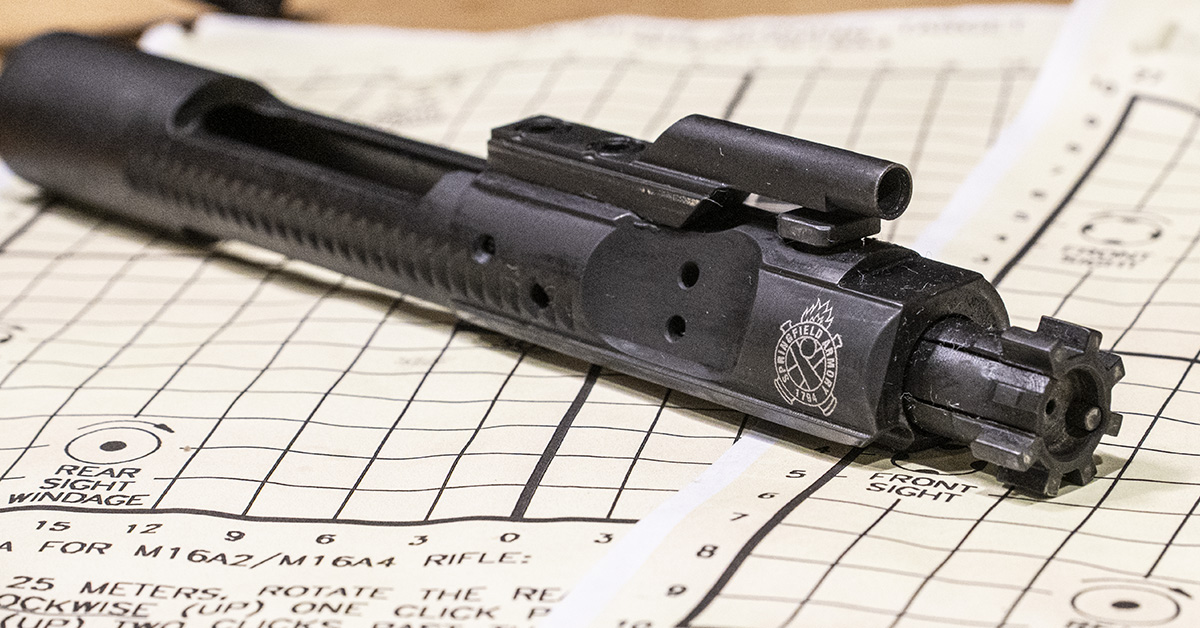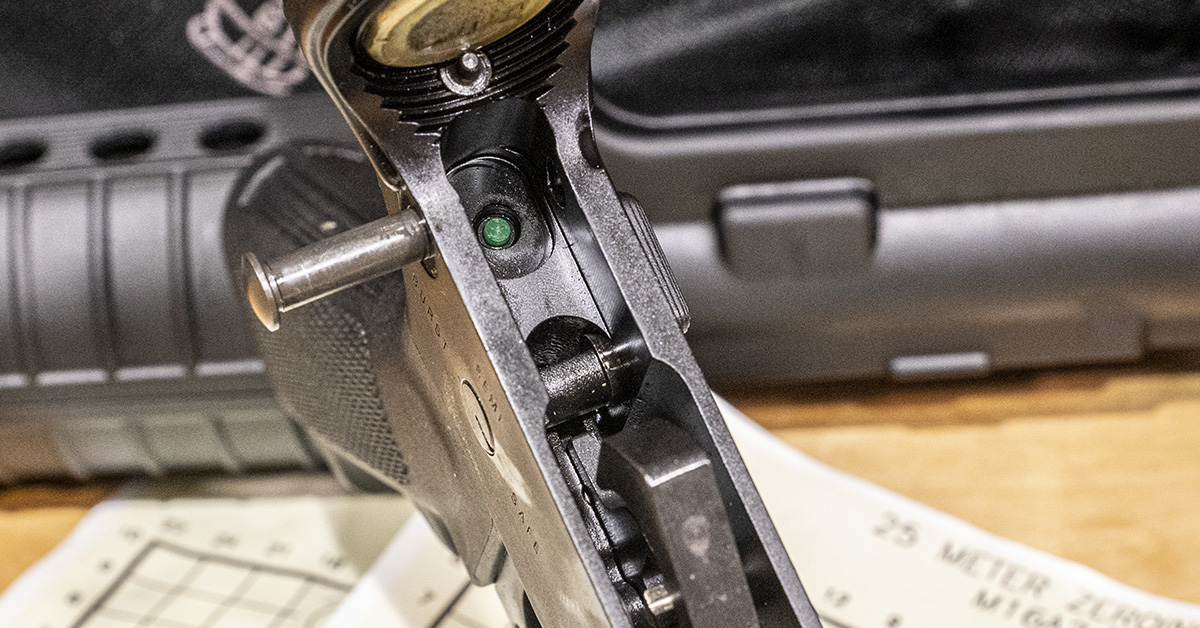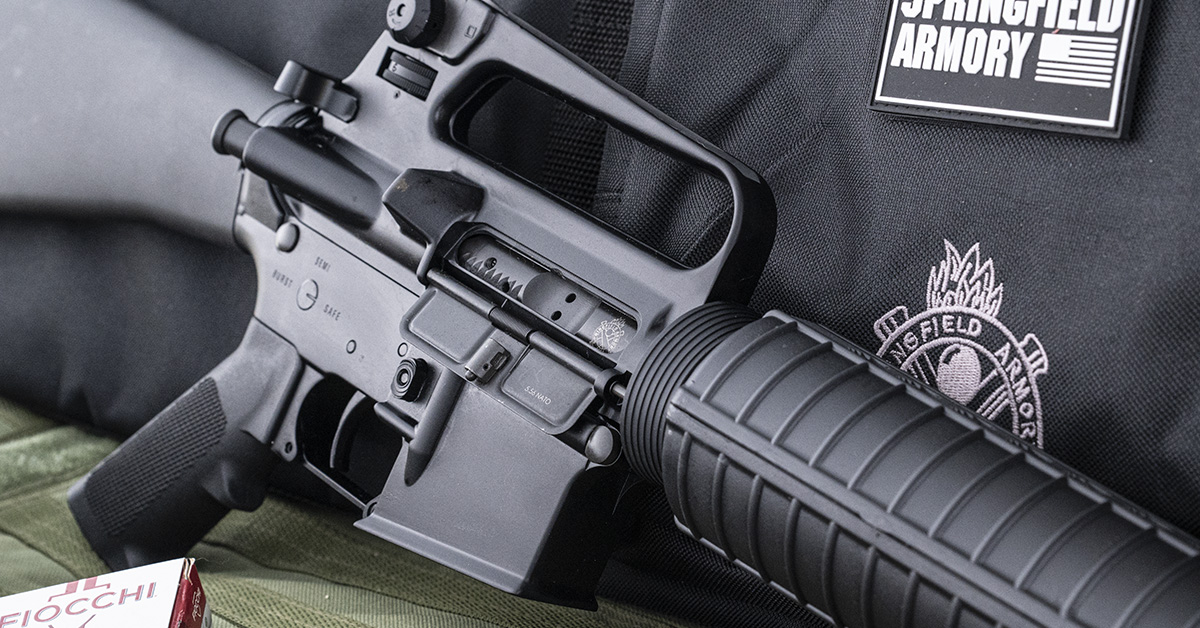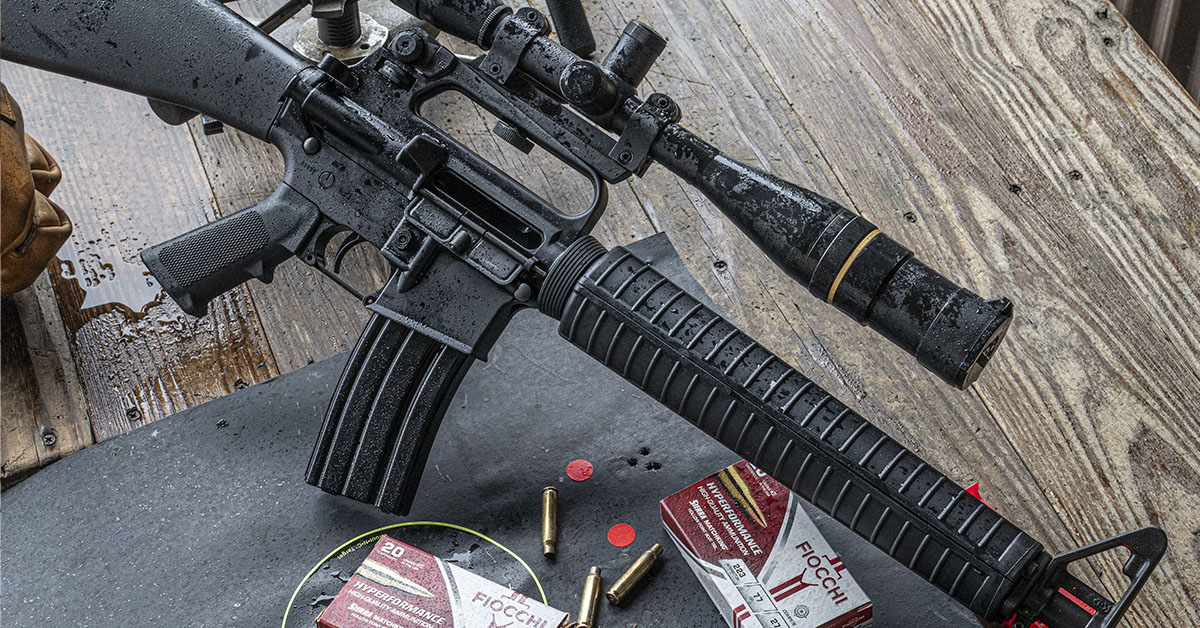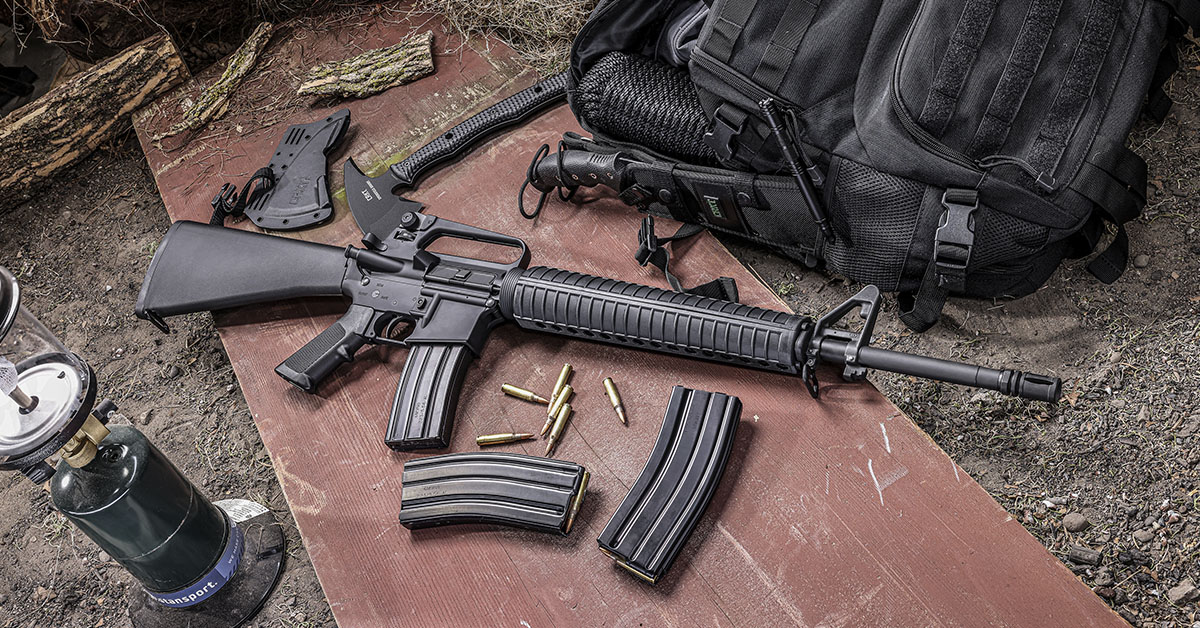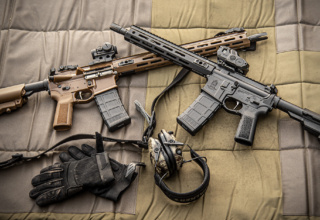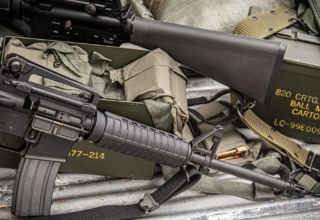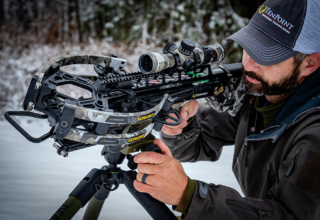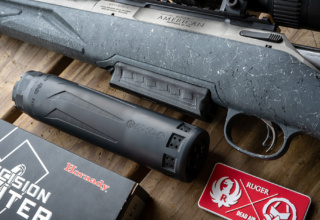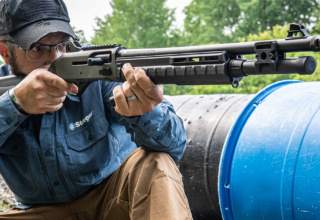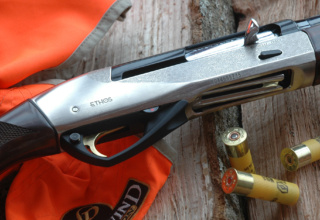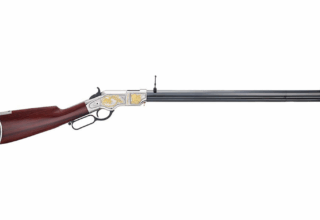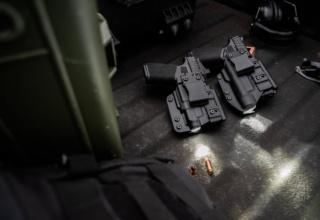Springfield Armory releases the SA-16 A2, a retro AR-15 variant that is sure to conjure up memories of times past
by David Kelley
Spending a healthy amount of my teenage years in the middle- to late-1990s shooting CMP and NRA service rifle matches provided me more than ample familiarity with the AR-15 A2 series of rifles. The thousands of rounds fired at local ranges and Camp Perry reiterated and reinforced the fundamentals of marksmanship, which later greatly benefited my introductory experience in the United States Army during One Station Unit Training (OSUT) as an Infantryman trainee.
Being a pre-9/11 enlistee, the Basic Combat Training standard issue was the M-16A2, and in some cases the M-16A4. I’ll admit that memory has slipped and I’m unable to recall if the post now named Fort Moore kept the A2 or A4 in inventory during the sweltering spring and summer of 2001. Regardless, the overall length and features are identical between the two rifles, with the exception of the A2’s carry handle being an integral part of the upper receiver, whereas the A4 features a removable Picatinny-mounted carry handle.
Many days were spent with the fixed buttstock and 20-inch barrel rifle cradled on top of waist-mounted magazine pouches during ruck marches to training areas, over the shoulder while conducting drill and ceremony, or in a field environment learning the very basics of doctrinal battle drills and priorities of work. Plenty of additional time was spent during those memorable 14 weeks with rifle in hand, including the Drill Sergeants utilizing a physical training regimen that incorporated the weapon into calisthenic exercises.
I could ramble in greater detail about those experiences for pages, although many are stored deep in the memory bank and not often recalled…until recent unboxing of Springfield Armory’s latest release for 2024.
Nearly forty years after military adoption of the M-16A2 and Colt’s release of the semi-automatic A2 to the civilian market, Springfield Armory introduces its latest replica of this iconic firearm — the SA-16 A2. Simply put, the SA-16 A2 is a refined clone of the full-length A2 series of the M-16/AR-15 platform commonly used prior to the military and civilian trends of collapsible-stocked carbines with modular forearms and rail-mounted optics now seen in widespread use.
The SA-16 A2
Overall length of the rifle is 39.5 inches from the tip of the flash hider to rear of the A2 stock featuring trapdoor storage. Empty weight is 7 lbs., 8 oz. The 20-inch chrome-lined barrel is manufactured from 4150 chrome moly vanadium and is chambered to 5.56 NATO with a 1:7 twist rate. Consistent with original dimensions, the barrel is .750 inches in diameter with a peened A2 front sight gas block assembly and bayonet lug. The barrel and gas tube are enclosed with a two-piece A2 handguard. Both the upper and lower receivers are forged 7075 T6 aluminum with Type III hard-coat anodizing. The trigger, trigger guard, and grip are all MILSPEC.
Added features include a few that are purely for visual aesthetics and several that are fully functional in comparison to the original A2 design. Keeping the theme of retro/replica, Springfield has the lower receiver marked as “PROPERTY OF U.S. GOVT.” centered between the Springfield Armory logo and the base of the magazine well.
There is even an engraving for “burst” at the three o’clock position of the selector switch, though the safety can only be moved between the safe and semi-auto positions.
Functional upgrades to a standard A2 are the M4 feed ramps, and Springfield’s Accu-Tite tension system. M4 feed ramps allow a smoother entry of the cartridge from the magazine to the chamber in contrast to the shallower and narrower cuts of the historical rifle. The SA-16 A2 also has a slight funnel cut around the internal perimeter of the magazine well entrance compared to the original MILSPEC receivers.
One feature that I had not previously used or encountered is the Accu-Tite Tension System. The Accu-Tite system uses a nylon-tipped screw accessed through the bottom of the lower receiver to put slight upward pressure on the rifle’s upper receiver. This reduces any looseness between upper and lower receivers. To adjust the tension, the grip is removed and then the accessible screw is adjusted with a 1/8-inch Allen wrench.
The Springfield SA-16 A2 delivers in a black nylon case with internal hook-and-loop straps and one aluminum body/plastic follower Made-in-the-USA 30-round magazine.
Range Time
Veterans with fine memories of this rifle design will appreciate the conditions on test day. On the single day that I had available for the week, there was rain, sleet, and snow. Setting up targets immediately resulted in wet clothing, chills, and an overall feeling of a dreary military range day. The phrase “if it ain’t raining, we ain’t training” was a common theme years ago and it rang true when test firing this SA-16 A2. Just like the good old days! As opposed to decades ago, at least I could drive home in a warm vehicle and not walk miles back to the barracks with a rucksack on my back.
In an offset to the discomfort and lack of ideal shooting conditions, I was glad to see positive results from a few boxes of Fiocchi 55-gr. Range Dynamics and a box of my favored Fiocchi .223 Remington cartridges for AR-15s — the Hyperformance 77-gr. load.
To keep the retro theme and eliminate as much human error as possible, the zero and initial firing was completed on a traditional 25-meter zero target specifically designed for the M-16 series of rifles. A three-shot group was fired with the rear elevation dial set on the 8/3+1 line and the base of the front sight flush with the top of the sight post well. To center the first group, the front sight was moved four positions up and the windage dial required minimal movement. The groups fired with iron sights on the short line measured .63, .66, .24, and .55 inches for an average of 2 MOA. Admittedly, the groups showed some vertical dispersion, which is no doubt an eyesight glitch more so than firearm inconsistency.
After the 25-meter “battlesight zero” was complete, I transitioned to a vintage qualification target that was common when the M-16A1 and A2 were standard issue — an “ALT-C” — that simulates targets from 50 to 300 meters. The reduced distance of 25 meters was used by the U.S. Army when a full distance “pop-up” qualification range was not feasible or available. Although the target is still occasionally used, it no longer suffices for a record qualification per current training standards.
Forty rounds were fired: 20 from prone on sandbags and 20 prone non-supported. This was an exercise with a gentle reminder to completely focus on the front sight, squeeze the trigger, and transition to the next aiming point. Thirty-nine “hits” resulted, which I considered acceptable given the lack of recent positional and iron-sight usage.
To gauge full accuracy potential and to remove the chance of error with the rear peep and front post, a B-Square optic mount with a reliable 25x scope was secured to the carry handle. Both 55-gr. and 77-gr. Fiocchi shot well at 100 yards, with an expected advantage going to the heavier Hyperformance using a Sierra MatchKing bullet. Four separate groups were fired with each. The 55-gr. Range Dynamics punched five-shot groups of 1.45, 1.72, 1.65, and .98 inches for a 1.45-inch average. The 77-gr. turned out an impressive .63 inches for the best group of the day, followed by 1.11-, 1.15-, and 1.33-inch clusters, averaging 1.05 inches.
Overall, this rifle not only serves as a replica of a historical rifle, but it also shoots very well. One couldn’t ask for better accuracy from an AR-style rifle equipped with a MILSPEC trigger and non-floating handguard. The trigger does show a lengthy pull, being MILSPEC, although it is smooth and was easy to “stack,” or pause, just before the breaking point. The receivers are solidly mated by the Accu-Tite system, and all internal parts feel as if they will prove as reliable as you would expect from a company with a benchmark reputation like Springfield Armory.
The SA-16 A2’s long barrel, fixed stock, and non-modular forearm still have a purpose when set next to the most modern battle rifles. Whether chosen as a nostalgic talking piece or used as a range rifle, I’ve found that retro rifles are best suited to handle and fire when a trip down memory lane is on the calendar of events. Enjoy it!
Springfield Armory SA-16 A2 Specifications
- Chambering: 5.56x45mm NATO; .223 Remington
- Length: 39.5 in.
- Weight: 7 lbs., 8 oz.
- Barrel: 20 in., 4150 CMV, chrome-lined, 1:7 twist
- Sights: A2 dual aperture rear, A2 front post
- Upper Receiver: forged 7075 T6 aluminum, Type III hardcoat anodized, forward assist, M4 feed ramps
- Lower Receiver: forged 7075 T6 aluminum, Type III hardcoat anodized, Accu-Tite Tension system
- Gas System: rifle length
- Bolt Carrier Group: enhanced M16
- Trigger: MILSPEC
- Stock: A2 fixed
- Grip: A2
- Handguard: A2, polymer w/integral heat shield
- Muzzle Device: A2 flash hider (1/2×28)
- Magazine: (1) GI aluminum, 30 rds.
- MSRP: $1,249
- FIELD TEST: TenPoint TX Ultra 29.5 Crossbow - December 16, 2025
- TESTED: Ruger/Dead Air RXD 30Ti Suppressor - November 3, 2025
- TESTED: Stoeger M3000 Freedom Series Tactical - September 17, 2025

